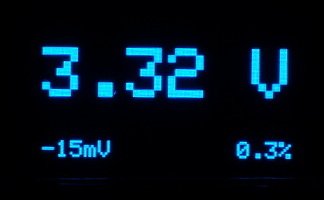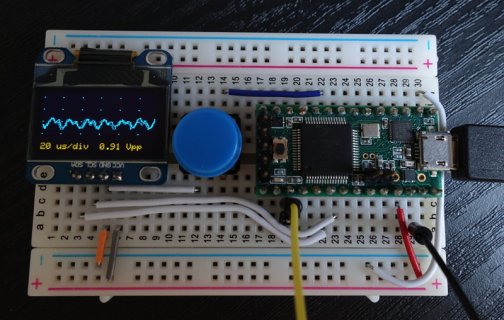I realize this is just a toy, but it's still fun to play with and pretty useful when I need to see whether the pins are signaling or just floating around. A picture is worth a thousand words:



There's an automatic voltmeter mode that kicks in when the input is relatively stable and I'd be staring at a flat line. There's a zero trigger and a sane ms/div value displayed (the grid changes to accomodate). I used the SSD1306 OLED screen. Code is here: https://github.com/laurb9/tiny_scope
This works on both Arduino UNO and Teensy 3.1. I'm using the stock analogRead() for now without any optimizations, but I do change the ADC parameters to get different sampling speeds. In the tiny_scope.ino, there is an ADC_MODE value that can be changed from 0 (slowest) to 5 (fastest). I can reach sampling rates from 10Ksps to about 300K on Teensy. I should probably add a button for that.
One thing I did notice though, with Arduino 1.0.6 code size is 26K and fastest sampling speed is about 330Ksps. Same code with Arduino 1.6 (beta) is 45K and speed drops to about 250K. Still a lot faster than what I get on the UNO.
This is the assembled project:




There's an automatic voltmeter mode that kicks in when the input is relatively stable and I'd be staring at a flat line. There's a zero trigger and a sane ms/div value displayed (the grid changes to accomodate). I used the SSD1306 OLED screen. Code is here: https://github.com/laurb9/tiny_scope
This works on both Arduino UNO and Teensy 3.1. I'm using the stock analogRead() for now without any optimizations, but I do change the ADC parameters to get different sampling speeds. In the tiny_scope.ino, there is an ADC_MODE value that can be changed from 0 (slowest) to 5 (fastest). I can reach sampling rates from 10Ksps to about 300K on Teensy. I should probably add a button for that.
One thing I did notice though, with Arduino 1.0.6 code size is 26K and fastest sampling speed is about 330Ksps. Same code with Arduino 1.6 (beta) is 45K and speed drops to about 250K. Still a lot faster than what I get on the UNO.
This is the assembled project:




